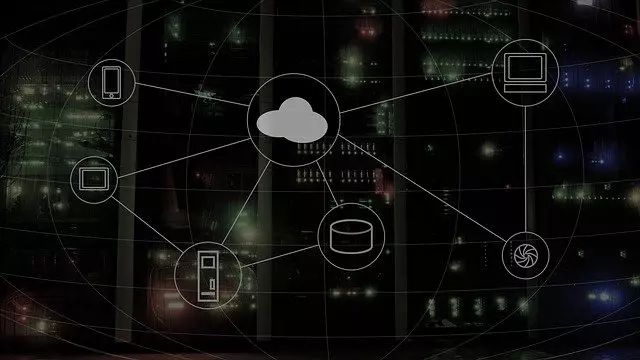Network security is the practice of preventing and protecting both hardware and software technologies against unauthorized usability and integrity of your network and data.
Network security is implemented by a network administrator or system administrator who implements the security policy, network software and hardware needed to protect a network and the resources accessed through the network from unauthorized access, exploitation, modification, misuse, malfunction, destruction, and network resources.
The first layer of network security is enforced through a username and password mechanism, which only allows access to authenticated users with customized privileges. When a user is authenticated and granted specific system access, the configured firewall enforces network policies, that is, accessible user services.
Also Read:
- What is Cloud Security and Why It is Important
- What is IOT(internet of things) and How IoT works
- What is Cybercrime how to protect yourself against it
- What is biometrics: Are biometrics safe to Use
Types of Network Security
There are many components to a network security system that work together to improve your security posture. Now let’s take a look at some of the different ways you can secure your network.
- Firewalls – Firewalls put up a barrier between your trusted internal network and untrusted outside networks, such as the Internet. They use a set of defined rules to allow or block traffic. A firewall can be hardware, software, or both.
- Anti-malware – Viruses, worms, and trojans by definition attempt to spread across a network, and can lurk dormant on infected machines for days or weeks. Your security effort should do its best to prevent initial infection and also root out malware that does make its way onto your network.
- Intrusion Detection Systems – are the appliances that monitor malicious activities in a network, log information about such activities, take steps to stop them, and finally, report them.
- Access control – You should be able to block unauthorized users and devices from accessing your network. Users that are permitted network access should only be able to work with the limited set of resources for which they’ve been authorized.
- Network segmentation – Software-defined segmentation puts network traffic into different classifications and makes enforcing security policies easier. Ideally, the classifications are based on endpoint identity, not mere IP addresses.
- Application security – Insecure applications are often the vectors by which attackers get access to your network. You need to employ hardware, software, and security processes to lock those apps down.
- Behavioral analytics – To detect abnormal network behavior, you must know what normal behavior looks like. Behavioral analytics tools automatically discern activities that deviate from the norm.
- Data loss prevention – Human beings are inevitably the weakest security link. You need to implement technologies and processes to ensure that staffers don’t deliberately or inadvertently send sensitive data outside the network.
- Email security – Email gateways are the number one threat vector for a security breach. Attackers use personal information and social engineering tactics to build sophisticated phishing campaigns to deceive recipients and send them to sites serving up malware.
- Virtual Private Networks(VPN) – A virtual private network encrypts the connection from an endpoint to a network, often over the Internet. This way it authenticates the communication between a device and a secure network, creating a secure, encrypted “tunnel” across the open internet.
- Mobile device and wireless security – Wireless devices have all the potential security flaws of any other networked gadget — but also can connect to just about any wireless network anywhere, requiring extra scrutiny.
- Security information and event management (SIEM) – These products aim to automatically pull together information from a variety of network tools to provide data you need to identify and respond to threats.
- Wireless Security – Wireless networks are not as secure as wired ones. Cybercriminals are increasingly targeting mobile devices and apps. So, you need to control which devices can access your network.
- Web security- A web security solution will control your staff’s web use, block web-based threats, and deny access to malicious websites. It will protect your web gateway on-site or in the cloud. “Web security” also refers to the steps you take to protect your own website.
Aspects of Network Security
1. Privacy
In network security, Privacy means both the sender and the receiver expect confidentiality. The transmitted message should be sent only to the intended receiver while the message should be opaque for other users. Only the sender and receiver should be able to understand the transmitted message as eavesdroppers can intercept the message.
Therefore, there is a requirement to encrypt the message so that the message cannot be intercepted. This aspect of confidentiality is commonly used to achieve secure communication.
2. Message Integrity
Data integrity means that the data must arrive at the receiver exactly as it was sent. There must be no changes in the data content during transmission, either maliciously or accident, in transit.
As there are more and more monetary exchanges over the internet, data integrity is more crucial. The data integrity must be preserved for secure communication.
3. End-point authentication
Does authentication mean that the receiver is sure of the sender?s identity, i.e., no imposter has sent the message.
4. Non-Repudiation
Non-Repudiation means that the receiver must be able to prove that the received message has come from a specific sender. The sender must not deny sending a message that he or she send.
The burden of proving the identity comes on the receiver. For example, if a customer sends a request to transfer the money from one account to another account, then the bank must have proof that the customer has requested for the transaction
How Does Network Security Work
There are many layers to consider when addressing network security across an organization. Attacks can happen at any layer in the network security layers model, so your network security hardware, software, and policies must be designed to address each area.
It typically consists of three different controls: physical, technical and administrative. Here is a brief description of the different types of network security and how each control works.
Physical Network Security
Physical security controls are designed to prevent unauthorized personnel from gaining physical access to network components such as routers, cabling cupboards and so on. Controlled access, such as locks, biometric authentication, and other devices, is essential in any organization.
Technical Network Security
Technical security controls protect data that is stored on the network or which is in transit across, into or out of the network. Protection is twofold; it needs to protect data and systems from unauthorized personnel, and it also needs to protect against malicious activities from employees.
Administrative Network Security
Administrative security controls consist of security policies and processes that control user behavior, including how users are authenticated, their level of access and also how IT staff members implement changes to the infrastructure.
Benefit From Network Security
Enterprises cannot survive without network security. Because the dangers posed by hackers, disgruntled employees, untrained employees, etc., are simply too many to be handled without proper defense.
It is especially critical today because of the rapidly changing cybersecurity threat landscape. Therefore let’s take a look at some of the benefits of having a network security tool.
- Protection Of Confidential Data – Network security is not just about regulating what enters or leaves a network, it’s also about protecting what’s present inside of it. That is the data it contains. Such data security breaches can be prevented through it.
- Longevity Of Computers – By protecting your network against various security threats like malware, DDOS attacks, hacktivism, etc. you are enhancing the longevity of your computers. Because the more secure your network, the better condition your computers would be.
- Closed Environment Protected From The Internet – Network security offers a closed environment that is well-protected from the internet and the various external security threats. This is especially true in the case of private networks.
Network Security Devices
- Active Devices – These security devices block surplus traffic. Firewalls, antivirus scanning devices, and content filtering devices are examples of such devices.
- Passive Devices – These devices identify and report on unwanted traffic, for example, intrusion detection appliances.
- Preventative Devices – These devices scan the networks and identify potential security problems. For example, penetration testing devices and vulnerability assessment appliances.
- Unified Threat Management (UTM) – These devices serve as all-in-one security devices. Examples include firewalls, content filtering, web caching, etc.








